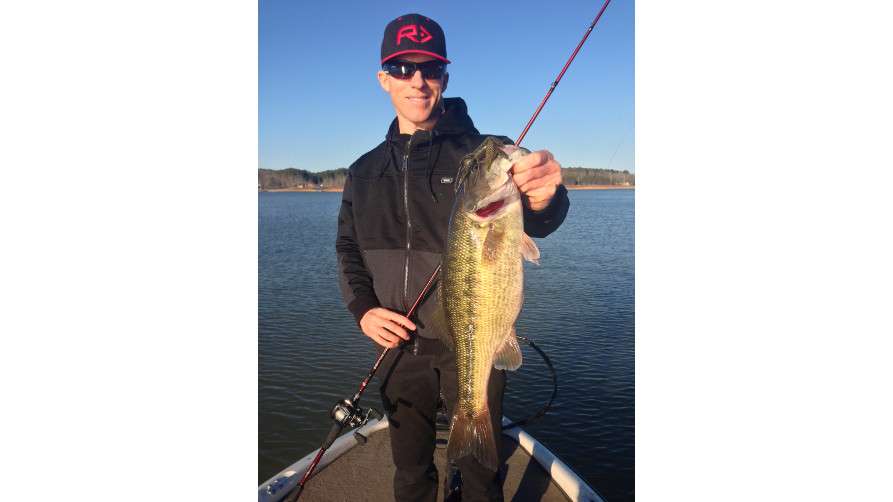
Bass feed less often in cold water, but they’re still plenty catchable by paying attention to your retrieve speed, lure size and the number of casts you make to a specific spot.
Slow down
A bass’ metabolism is sluggish in cold water, which means they don’t feed as often as they do when the water’s warm. That’s why I slow down my retrieve speed when the water temperature is in the low 40s to low 50s. A bass isn’t going to use a lot of energy to chase down fast moving prey if it doesn’t have to.
I fish a jig in cold water because it resembles both a crawfish and a bluegill — both appealing meals for bass looking to capitalize on a short feeding window when the water’s still cold.
I keep my jig hugging the bottom throughout the retrieve, pulling it along inches at a time. I’ll also make several pauses letting my jig sit motionless for up to 30 seconds at a time, especially when I feel my jig make contact with cover.
It takes patience to work a jig slowly, but I picture a bass looking at my jig the entire time it’s in the water. This keeps me from becoming impatient and working my jig too fast.
A slow moving jig is an easy target for a lethargic bass in cold water — one it can’t ignore.
Upsize your lures
Bass target large prey during the early spring in anticipation for the upcoming spawn. That’s why I upsize my lures in cold water — to appeal to the biggest bass in the area I’m fishing.
I fish a full-skirted jig with a bulky trailer, like the 7/16-ounce 4×4 Tournament Series Casting Jig paired with a 3.75-inch Yamamoto Flappin’ Hog trailer. This combination appeals to hungry prespawn bass looking to get the most return for the energy it’s going to expend hunting it down.
I target the first channel swing in creek arms while looking for rock or wood cover close to deep water. A large profile jig worked slowly in these areas can produce some of the biggest bass of the year.
Make repeated casts
Bass relate heavily to hard cover in cold water, like rock and wood, because they retain heat better than other forms of cover do. When late winter water temperatures reach the low 40s, a few degrees can make a big difference.
I target rock-lined causeway corners with crankbaits, like the Duo Realis M Series, because of its ability to produce reaction strikes when bass aren’t actively feeding. But it’s vital to make repeated casts to get the fish to react.
I’ve made up to 40 casts to a single causeway corner before getting my first bite. Once I do get that first bite, it can lead to a fish-catching flurry.
They key is to make contact with the rock on every cast, so the crankbait deflects off the cover and changes action. The crankbait’s sudden speed and direction change tempt the otherwise nonaggressive bass into striking.
Focusing on these three things will help you catch more and bigger bass on your next cold-water fishing trip.





